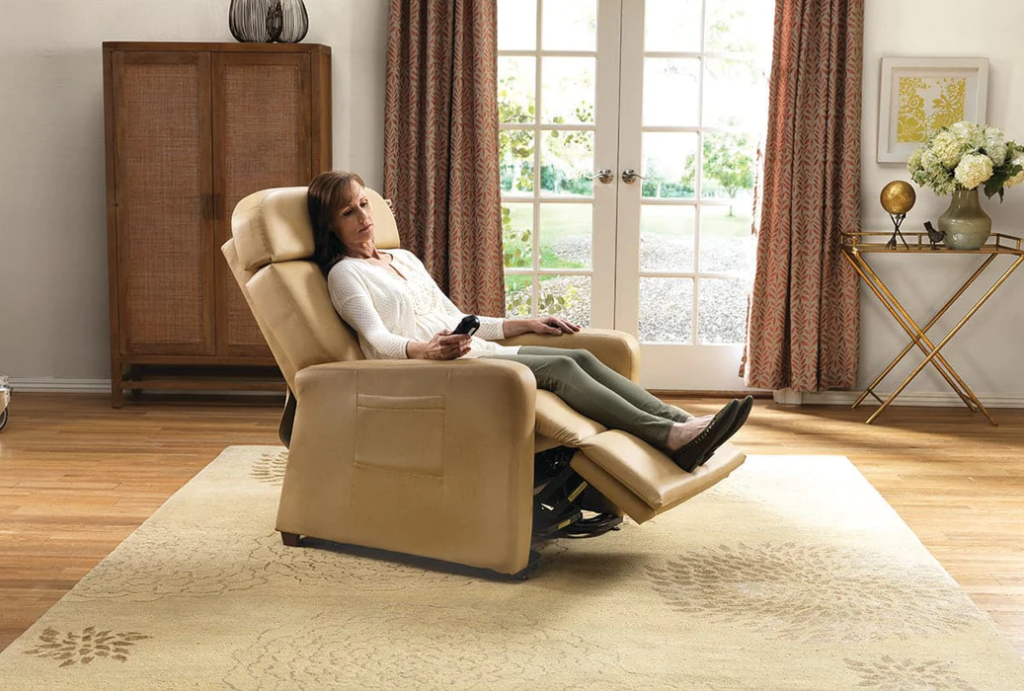
Selecting the right lift chair goes beyond style and color; it’s essential to choose the correct size for optimal comfort and support. Similar to finding a comfortable pair of shoes that fits well and supports your feet, a properly sized lift chair can significantly enhance your everyday comfort. Let’s explore some straightforward measuring guidelines to help you understand how to achieve the perfect fit.
Measuring Your Current Chair (If You Have One)
If you already have a chair or recliner at home that fits you perfectly, you can use it as a reference. Here are some measurements to take:
- Seat Width: Measure the width of the seat between the arms and write down the measurement. This is your seat width.
- Seat Depth: Measure from the front edge of the seat cushion backward to where it joins the back cushion and note the measurement. This is your seat depth.
- Back Height: Measure from the back of the seat cushion to the top of the backrest. This measurement is your back height.
- Seat to Floor Height: Measure from the front of the chair, from the floor to the top of the cushion. Write this measurement down as your seat to floor height.
Using these measurements, you can find a lift chair that closely matches the dimensions of the chair you already enjoy.
Measuring Yourself (If You Don’t Have a Reference Chair)
If you don’t have a reference chair, you can determine your ideal lift chair measurements based on your own proportions. Here’s how:
- Seat Width: Sit down on a chair with a backrest; dining room chairs work well for this. Measure across your lap in a straight line. Don’t wrap the tape measure around your hips, just measure across. Write down this measurement and consider adding an inch or two for comfort.
- Seat Depth: Place a yardstick or tape measure along the side of your hip, with the end against the backrest behind your bottom. Measure forward to the point behind your knee where it bends. This measurement is your seat depth.
- Back Height: Measure from the same point at the back of the seat behind your bottom, going up to the top of your head. This measurement represents your back height.
- Seat to Floor Height: With your feet resting on the floor in front of you, measure straight up to the point behind your knee where it bends. This measurement is your ideal seat to floor height.
Compare these measurements to the specifications of various lift chairs to find the one that suits you best.
Consider Your Weight
When choosing a lift chair, consider your weight. Since the chair’s motors assist you in standing, it’s crucial not to exceed the chair’s weight capacity. Typically, chairs have weight capacities of 325 lbs, 375 lbs, 500 lbs, or greater, with corresponding sizing. Ensure that your weight falls well within the recommended weight range for long-term reliability and comfort.
By following these sizing guidelines and considering your weight, you can select the perfect lift chair that offers both comfort and support tailored to your needs.